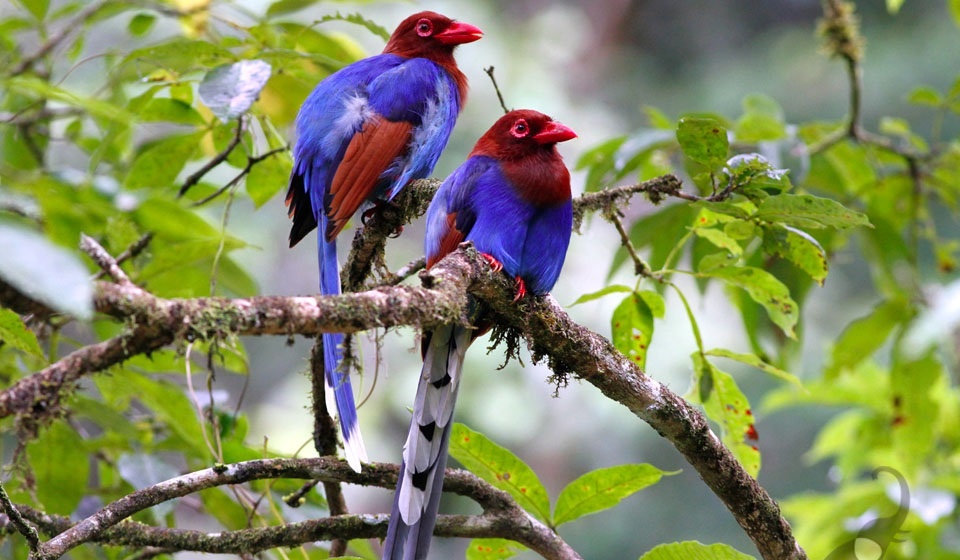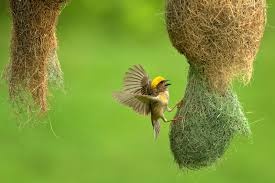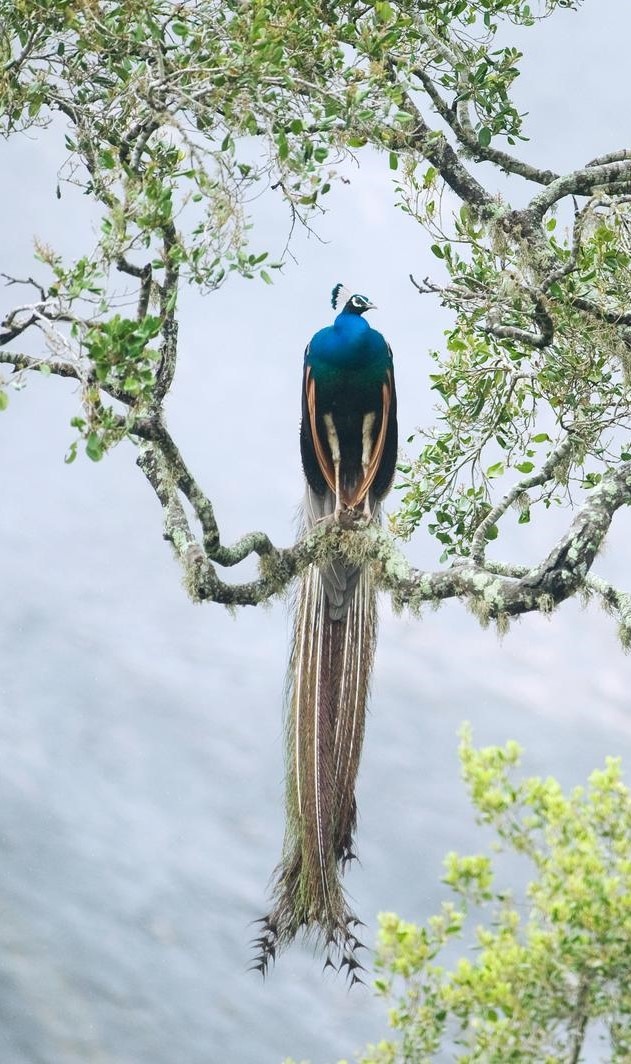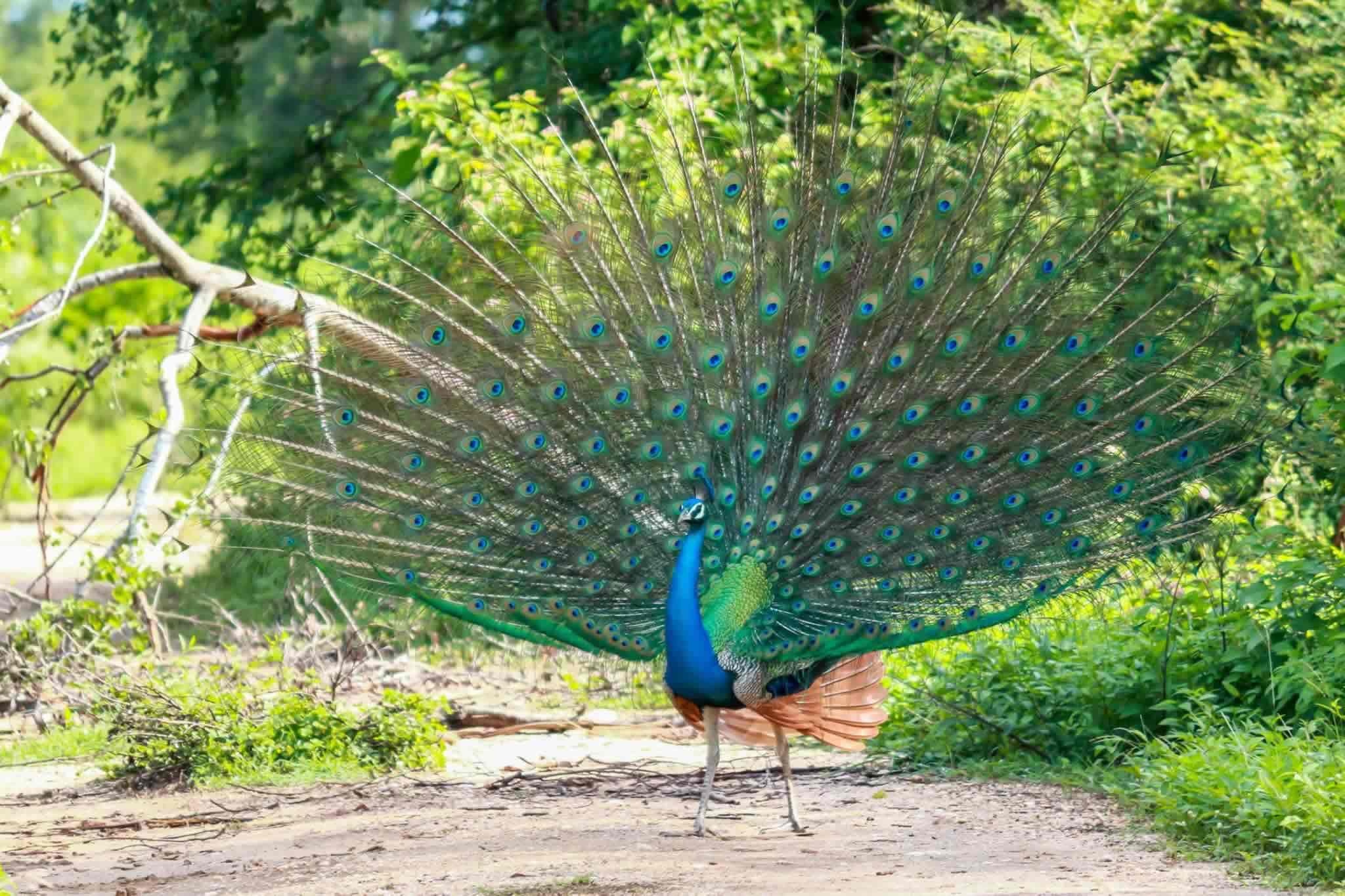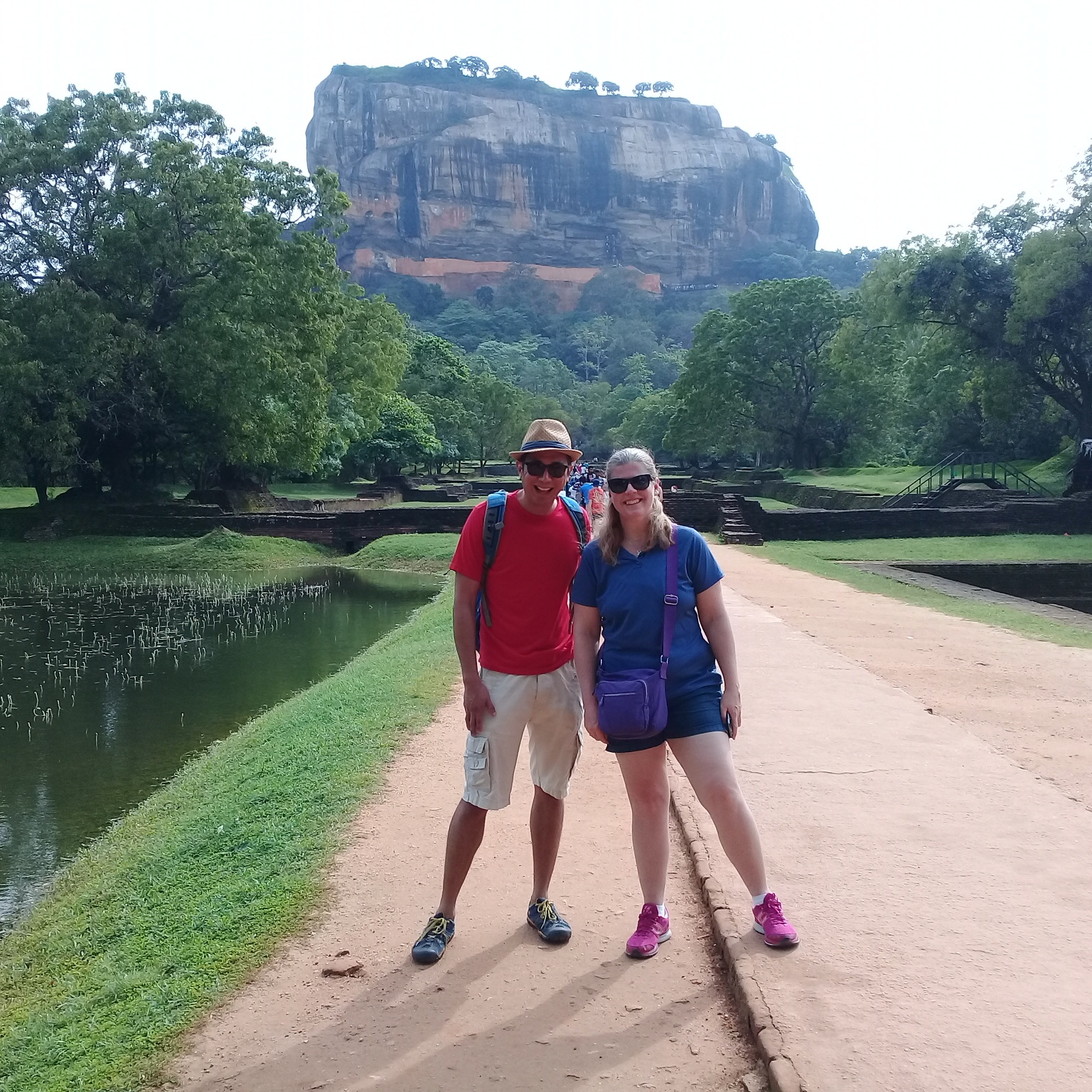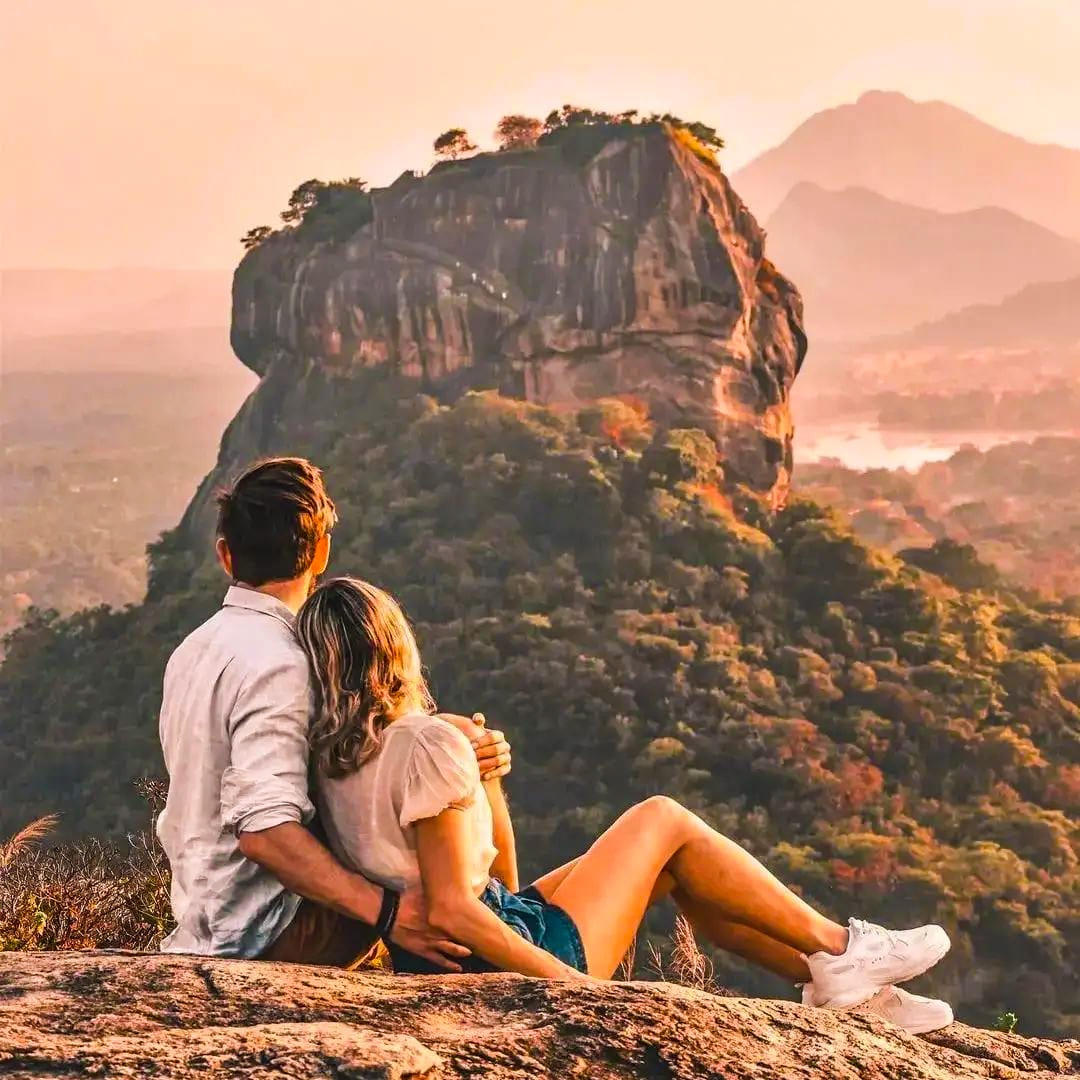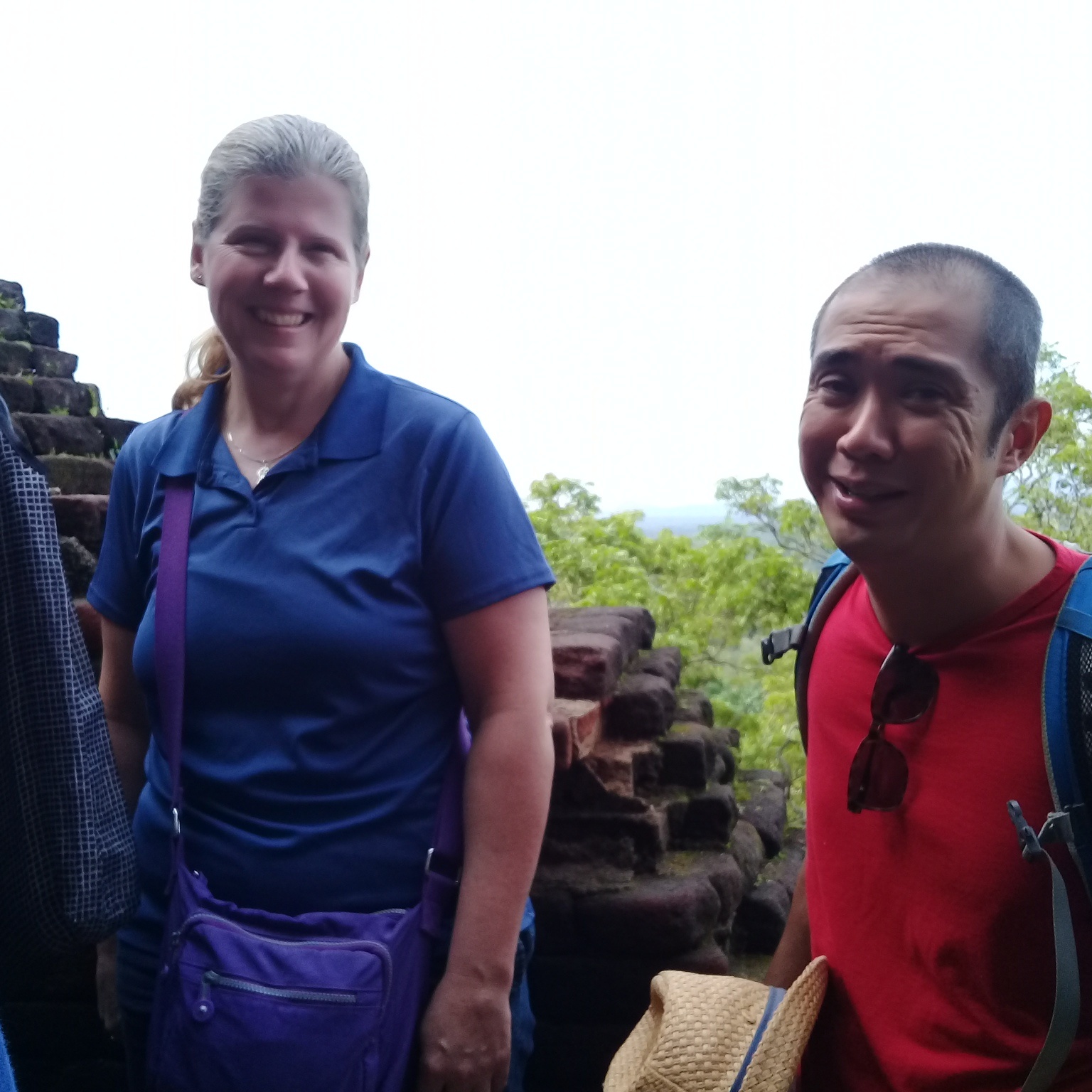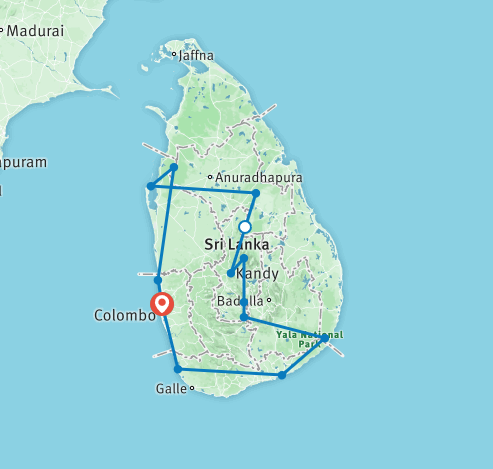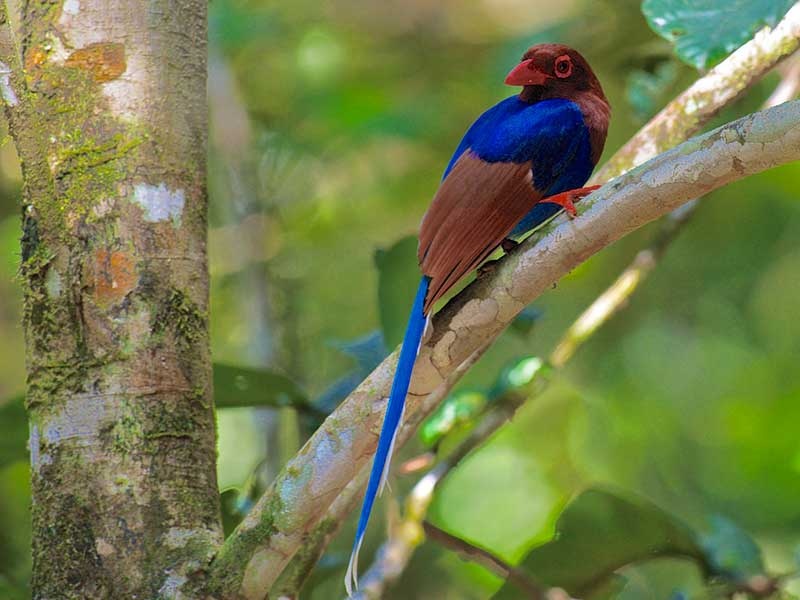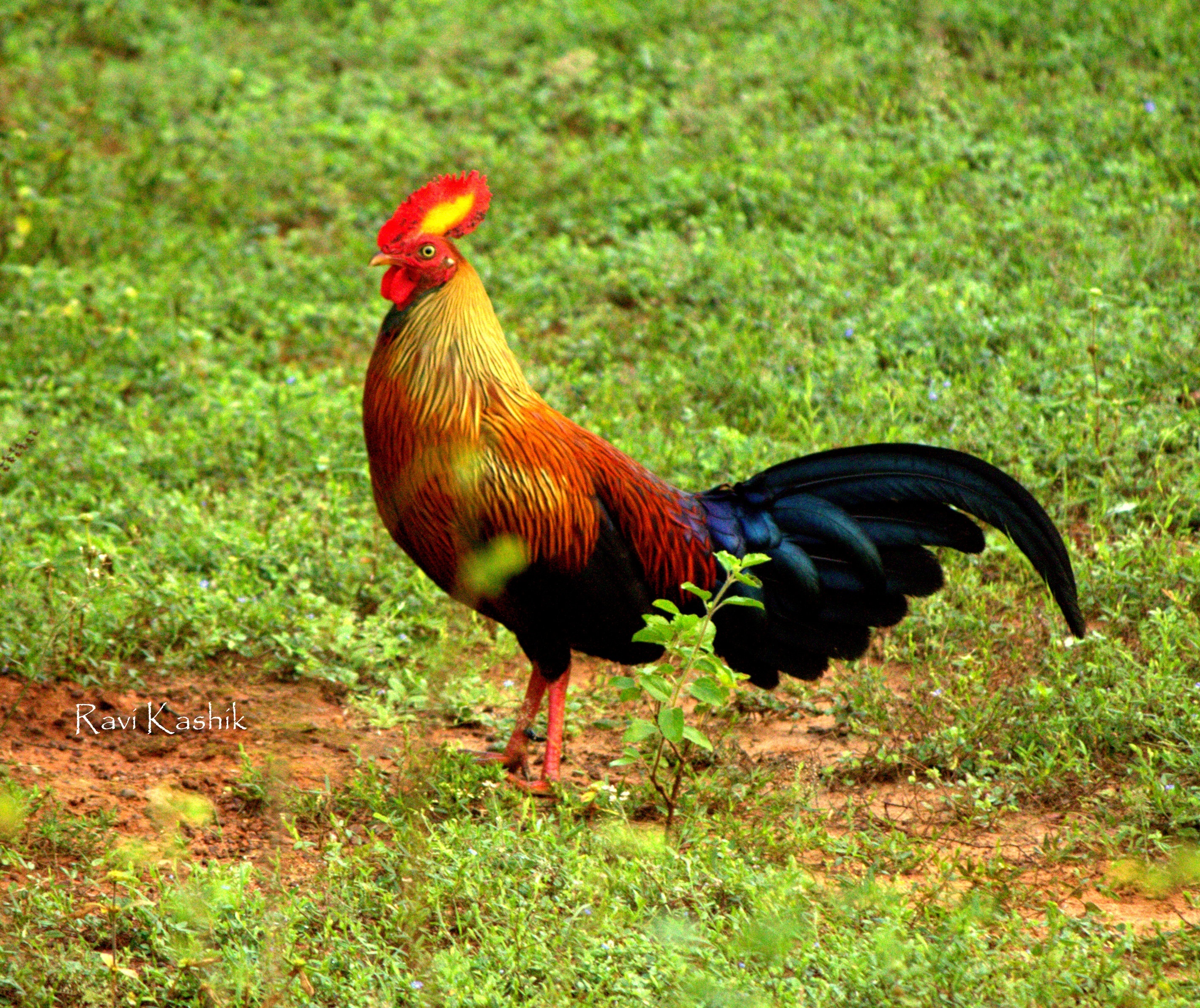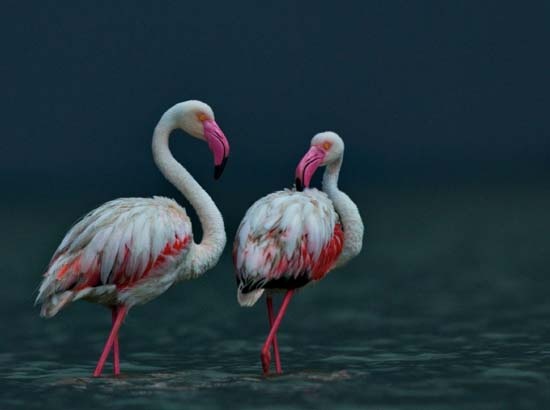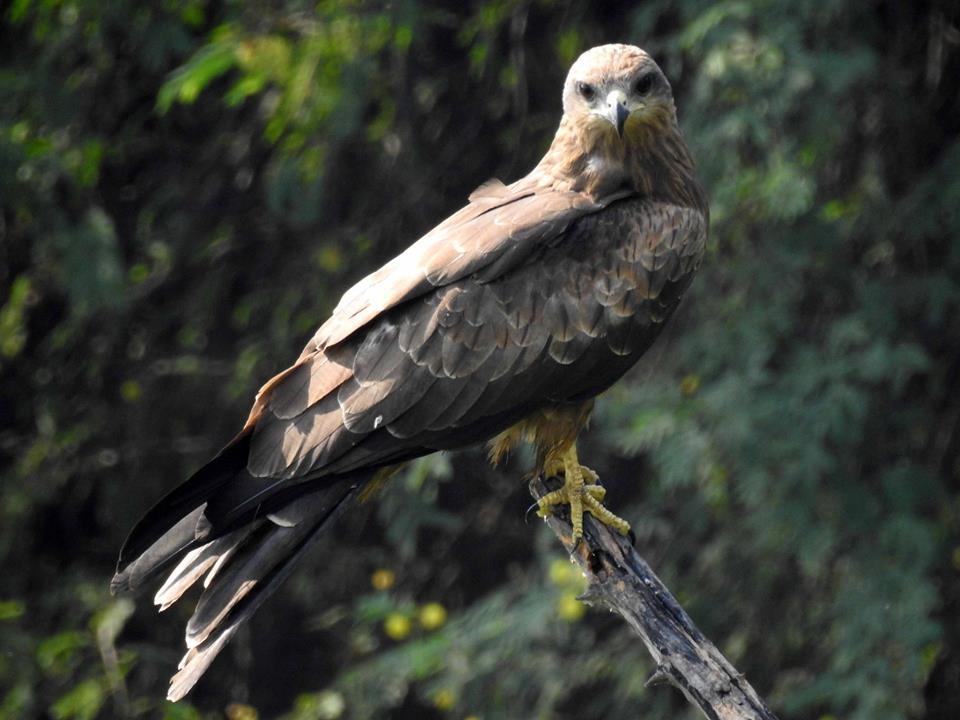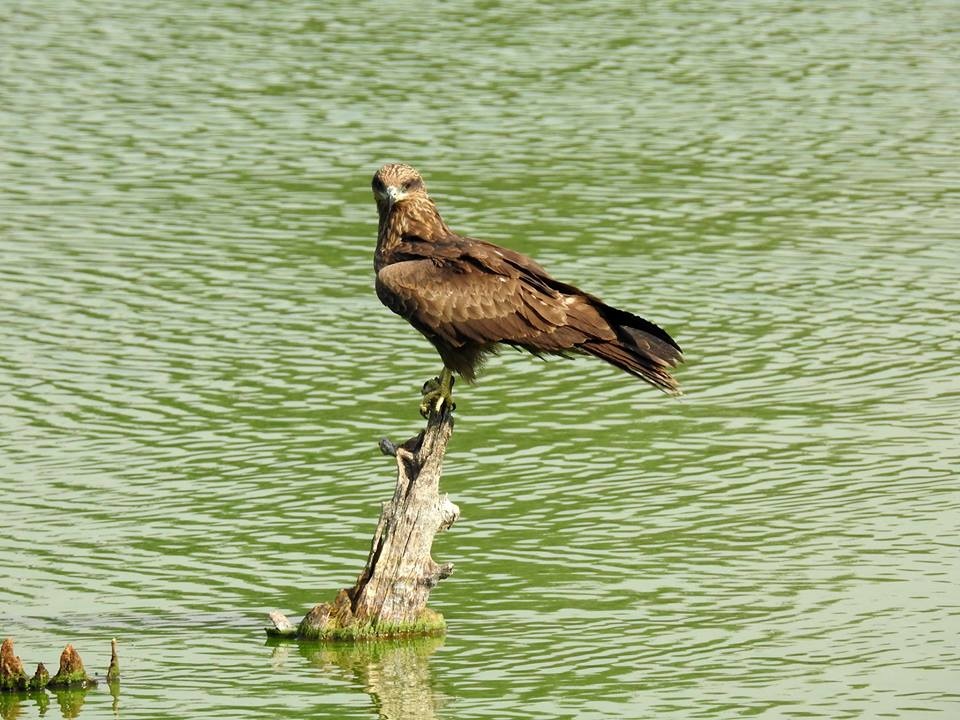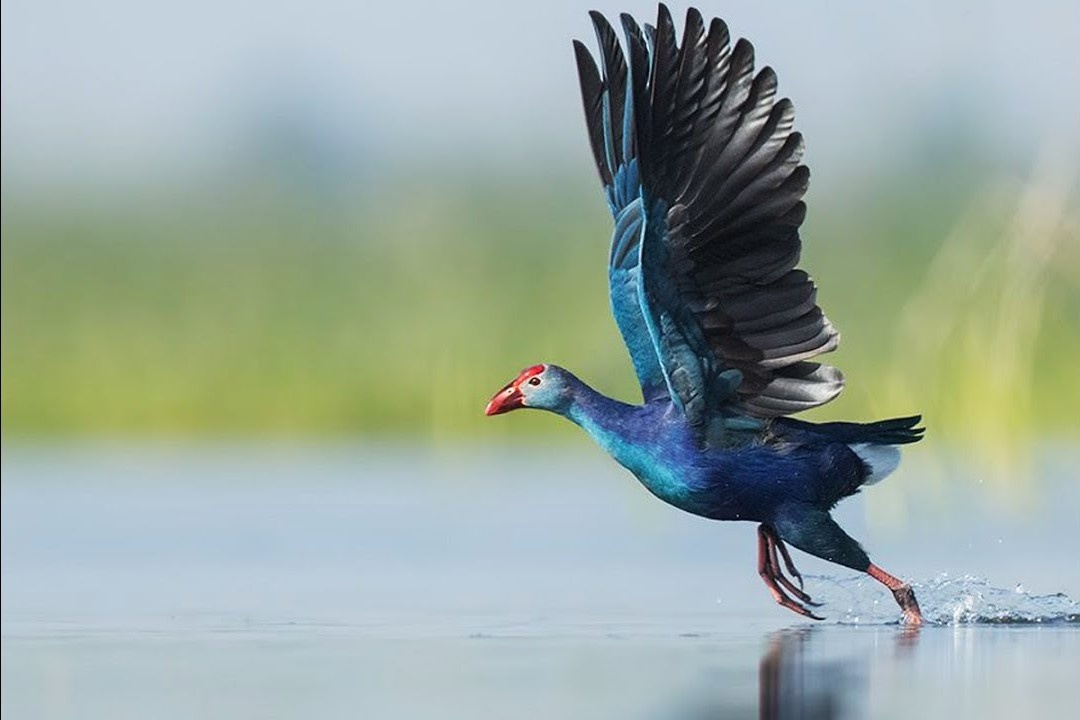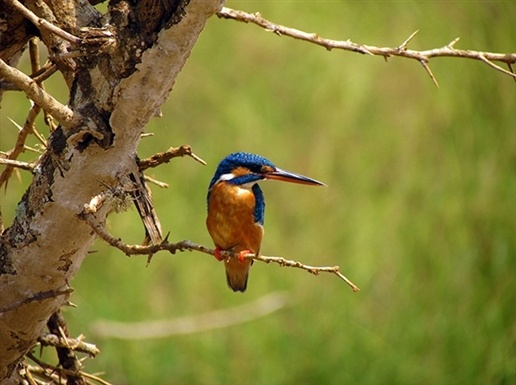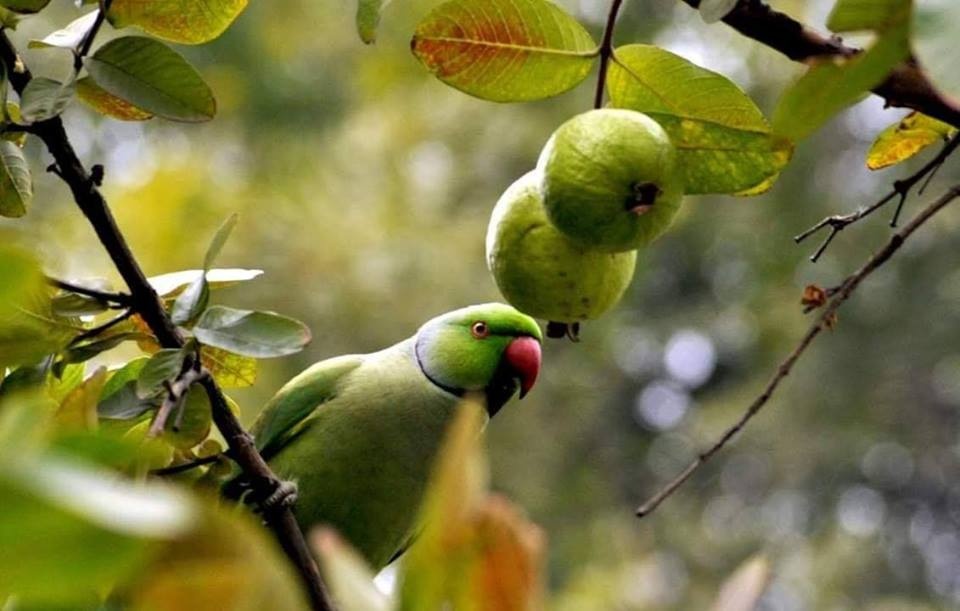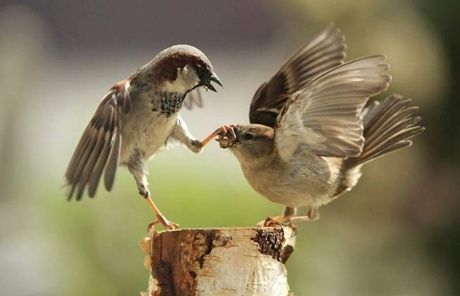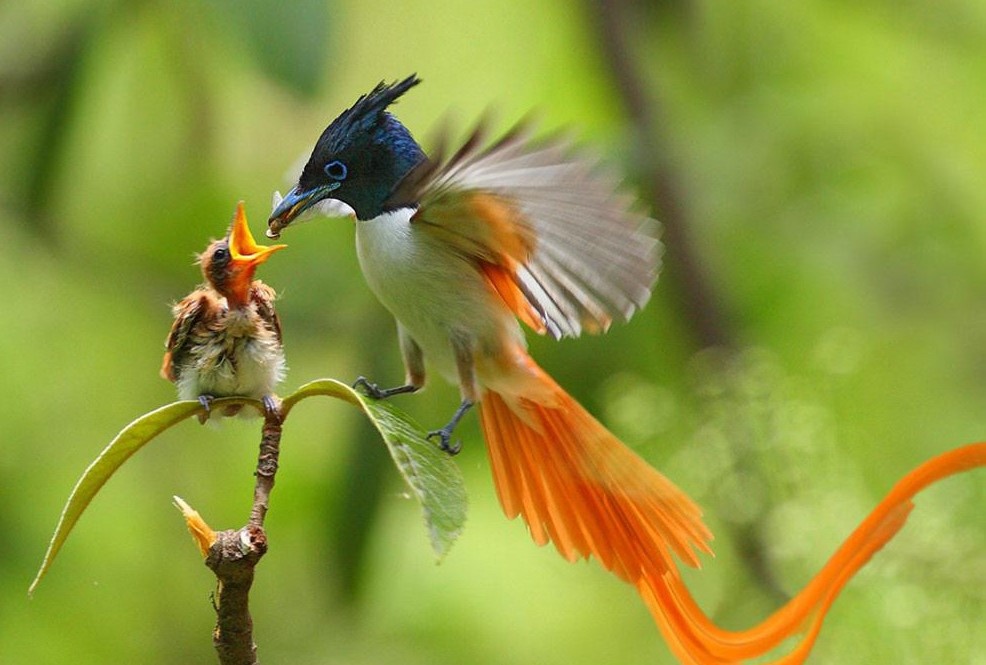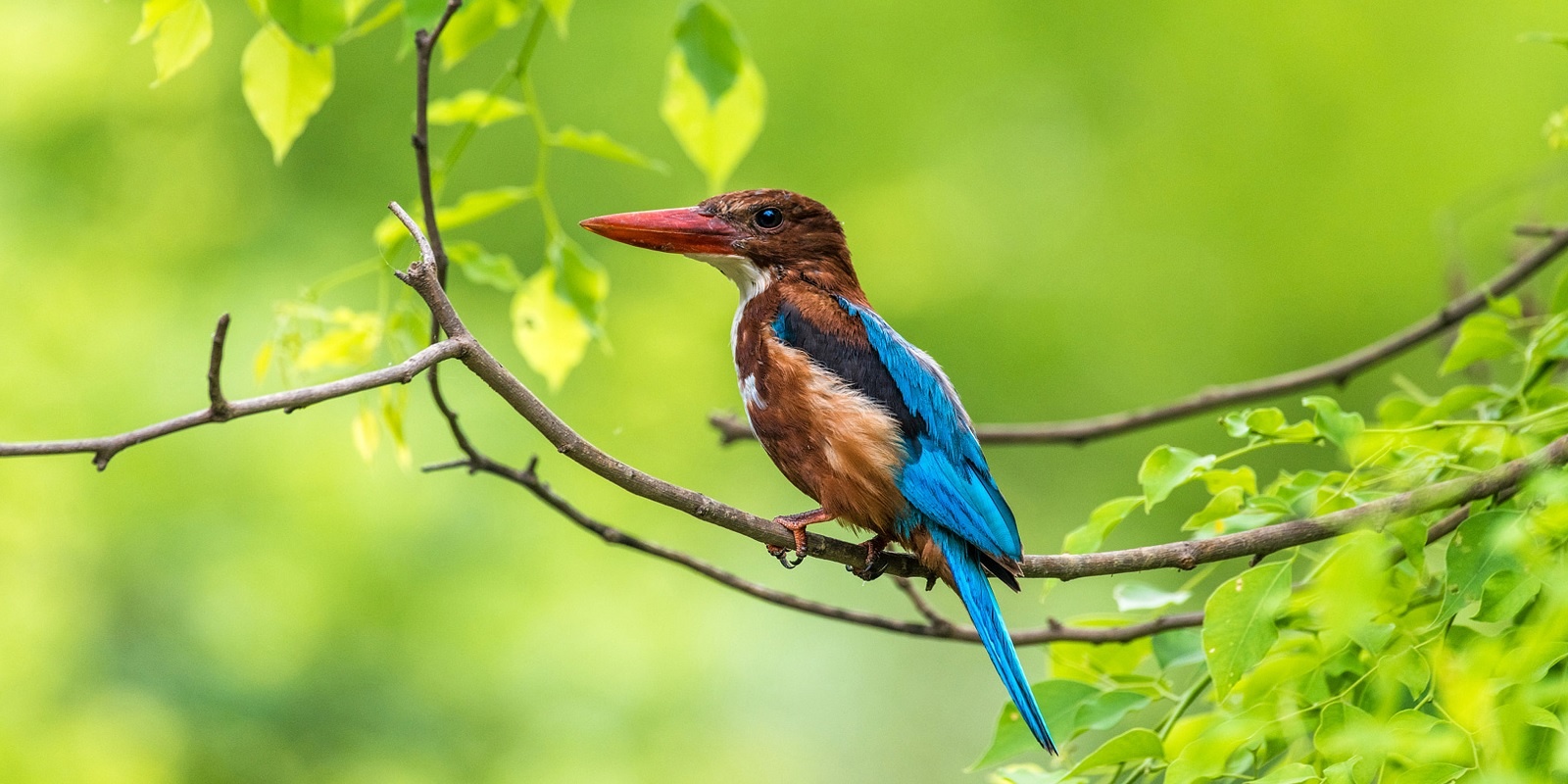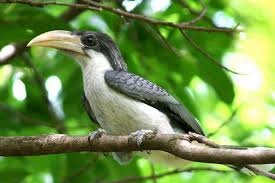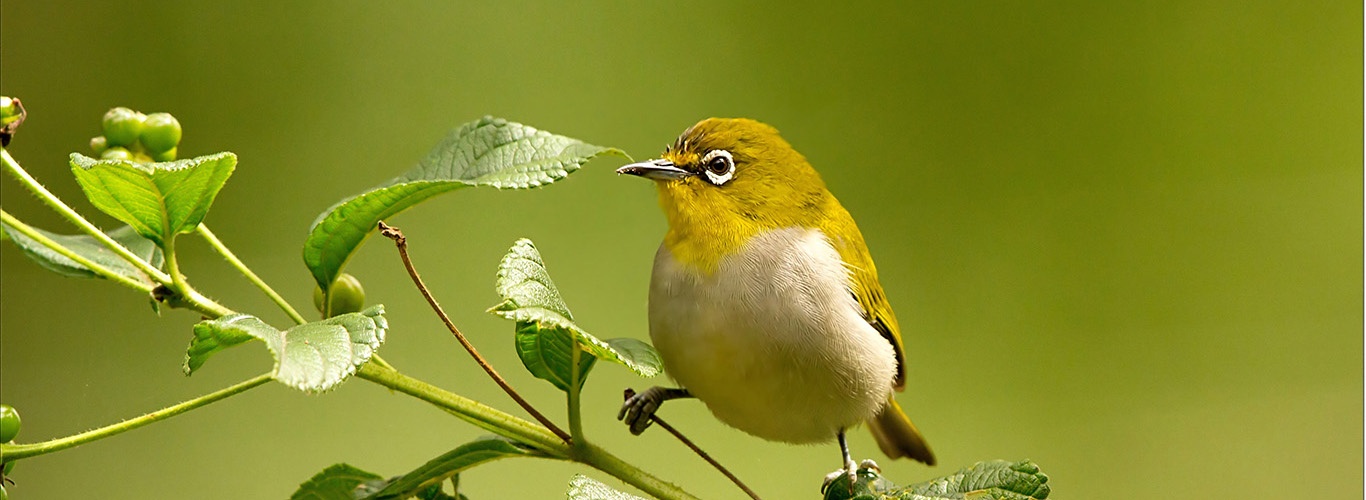Sri Lanka Bird Watching Tour
Sri Lanka Bird Watching Tour
$2900
Tour Overview
Sri Lanka is home to 26 endemic bird species and seven proposed endemic species. The total number of bird species recorded on the island is 492 of which 219 are breeding residents. junglefowl (Gallus lafayette ) Indian peafowl, Sri Lanka spurfowl Blue-breasted Common quail Brown-capped Pygmy Woodpecker much more birds. Sri Lanka is a birder’s paradise. A tropical island in the Indian Ocean situated 10 degrees north of the equator, boasting of diverse and favorable climatic conditions and natural habitats such as forests, scrublands, grasslands, wetlands, seas, and agricultural lands. The country is home to 439 species of birds of which 236 are breeding residents, 203 migrants, and the rest vagrants. A country as small as Sri Lanka has 33 endemic species and 68 endemic subspecies of birds with species endemism of 11% goes to demonstrates why Sri Lanka is one of the finest birding destinations in the world. This tour always Moring stared end evening day Excursion enjoy nicely The main bird sanctuary in Sri Lanka is the Kumana National Park which is considered one of the most important nesting and breeding grounds in Sri Lanka. The Bundala National Park situated at the southernmost tip of the bird migratory route is a favorite birding ground where flocks of flamingos, herons, and storks are a regular sight. The other places are the Kalametiya Bird Sanctuary, Sinharaja Rain Forest, Bodinagala Forest Reserve, Peak Wilderness Sanctuary, Kitulgala Forest Reserve, Yala, Wilpattu, Udawalawe, Wagamuwa, and Minneriya and Horton Plains National Parks in addition to numerous tanks, reservoirs, lagoons, marshes, lakes, and rivers. ...more ...less
Highlights
Itinerary
Day 1 : Arrive Sri Lanka - Negombo
Location: Negombo
Accommodation: Hotel
Meals Included: Breakfast, Dinner
On arrival in Sri Lanka at the Bandaranaike International Airport, you will get your first taste of warm Sri Lankan hospitality; Representative from stelaranholidays Tours. Will Welcome you and transfer to Negombo according your Arrival on fight schedule we will visit Gampaha botincalgarden .
Gampaha Botanic Gardens spreads over 43 acres of beautiful landscape with the lake developed beside the garden. It is generally a well-tended garden displaying a wide range of plants. This garden possesses an array of botanical and horticultural attractions with a rich history and a wonderful plant collection of the wet zone.
Negombo is a city on the west coast of Sri Lanka, north of the capital, Colombo. Near the waterfront, the remains of the 17th-century Dutch Fort now house a prison. Negombo Lagoon, lined with fishermen’s huts, feeds into the Dutch-era Hamilton Canal. The canal leads south to Colombo. Negombo is one of the major commercial hubs in the country and the administrative canter of Negombo. As known for its long sandy beaches and centuries old fishing industry. Overnights stay hotel Negombo ...more ...less
Day 2 : Negombo
Location: Anawilundawa Bird Sanctuary, Wilpattu National Park
Accommodation: Hotel
Meals Included: Breakfast, Dinner
Day 02 Wilpattu
Early lave from hotel Transfer to wilpattu Enroute Visit Anawilunda wet water zone are This includes endemics such as Fowls, Pigeons, Parrots, Parakeets, Malkoha, Coucal, Owl, Owlet, Hornbill, Barbet, Magpie, Bulbul, Warbler, Babbler, Thrush, White-eye, Mynah, Starling, Flycatcher, Flowerpecker, Pigeon, Barbet, Flareback, Wood shrike, Drongo, and Swallow. Anawilunda Sri Lanka is rich in nature, with a number of sanctuaries and national parks to protect the wildlife that inhabits the many varied ecosystems here. Anawilundawa Wetland Sanctuary is one of the more obscure sanctuaries that lie on the coastal belt between Negombo and PuttalamThe Anawilundawa Wetlands is a bird watcher’s haven, with over 150 species of birds; both resident and migratory. Resident and endemic bird species can be seen throughout the year; whilst the period from October to April is the best time for getting a glimpse of the many rare migratory birds. Anawilundawa is also the nesting site for many exotic birds; including some of the rarer species of cormorants, egrets, storks, and ibis, along with the pheasant tailed-jacana and the purple swamp hen.There are also over 20 species of mammals; including the Toque Macaque monkey, five threatened species of Slender Loris, Rusty Spotted Cat, Fishing Cat, and the Indian Otter. Over 70 species of butterflies breed here; whilst over 50% of the country’s freshwater fish species are found in this waters.Anawilundawa Wetland Sanctuary is especially good for bird watching, hiking and boat rides; and is fast growing into one of Sri Lanka’s most important ecotourism attractions. Wilpattu sanctuary was decalred as a National Park in 1938, Wilpattu National Park is located on the west coast close to the historical city of Anuradhapura .The dry zone jungle is thickly grown. Wilpattu Natonal Park is home for many villus or natural lakes which dot the landscape in the Wilpattu National Park. Except for two, these lakes contain rainwater, thus are important for resident and migratory water-birds.
The history of the park is also of interest with ancient ruins having been discovered in Wilpattu National Park. Queen named “Kuweni” (considered to be the mother of the Sinhala race) is said to have lived in the place known as Kalli Villu. Historical evidence also shows the fact that Prince Saliya, son of King Dutugemunu lived in Wilpattu over 2,000 years ago. There are approximately 30 species of mammals in the Wilpattu National Park which include the Sri Lankan Elephant, Sri Lankan Leopard, Lankan Sloth Bear, Sri, Spotted Deer, Buffalo, Sambar and Mongoose.
Reptiles and Amphibians in park , Monitor Lizard, Mugger Crocodile, Common Cobra, Rat Snake, Indian Python, Pond Turtle, and the Soft Shelled Turtle can be seen in Wilpattu National Park Overnights stay wilpattu Hotel
Day 3 : Minneriya
Location: Kaudulla National Park SAFARI, Minneriya National Park
Accommodation: Hotel
Meals Included: Breakfast, Dinner
Day 03 Minneriya & Kaudulla National Park
Habarana to Early morning leave to visit Kaudulla National Park Along with Minneriya and Girithale BirdLife International have identified Kaudulla as an Important Bird Area. Historically Kaudulla was one of the 16 irrigation tanks built by King Mahasen. Following a period of abandonment it was reconstructed in 1959. It now attracts and supports a variety of plant and animal life, including large mammals, fish and reptiles Minneriya National Park is reported as the Largest known wild Asian Elephant Gathering at one place in the World.The area was designated as a national park on 12 August 1997, having been originally declared as a wildlife sanctuary in 1938. Minneriya National Park has recorded over 170 species of birds. From Migrating waders like Woodsand Piper, Common Sandpiper & Kentish Plovers to forest birds like Malabar-pied Hornbills, Rufus Woodpecker the globally endangered Lesser Adjutant and the endemics Sri Lanka Grey Horn-bill, Sri Lanka Green Pigeon, Brown-capped Babbler, and Sri Lanka Jungle Fowl are some of the highlights. Minneriya National Park covers an area of 8,889 hectares is of tropical monsoon climate. The vegetation of the park consists of tropical dry mixed evergreen forests, abandoned chena lands, grasslands, and wetlands. The open grasslands and old Chena lands are dominated by the many species of small shrubs. Relax on hotel Overnights Stay at Hotel
Day 4 : Sigiriya UNSCO heritage Site
Location: Pidurangala, Sigiriya
Accommodation: Hotel
Meals Included: Breakfast, Dinner
Day 4 Sigiriya UNSCO heritage Site
After Breakfast Leave to Sigriya Lion Rock & pedurangala Rock climbing after village tour The history of Sigiriya is a long story. The rock came into being as a result of a rivalry between two brothers. The great rock fortress, Sigiriya was built by the King Kashyapa. King Kashyapa made this great place to protect himself from his brother King Mogallana. The Sigiriya rock is entwined with a tragic event. The heir to the throne had been King Mogallana, but King Kashyapa had taken power by force. King Kashyapa was afraid that his brother would come back again to take back his right to the throne. Therefore, to protect himself, he built this rock fortress. He did not want any invasion to happen by his brother. The name refers to a site of historical and archaeological significance that is dominated by a massive column of rock nearly 200 meters high the technology that has been used in creating the fort is excellent. However, Moggallana was able to defeat Kashyapa, and after that, the rock fortress was destroyed. Earlier it used to be a Buddhist monastery, and after the palace was destroyed, it became a Buddhist monastery once again. Sigiriya was discovered later in 1831 by Europeans. A major of the British army, Jonathan Forbes discovered Sigiriya on his way from Polonnaruwa. Many historians and archaeologists started excavating this rock fortress, and it is through the excavations that all the glory of the rock was discovered Pidurangala is an enormous rock located a few kilometres north of Sigiriya. The two rocks have an interlinked history: whilst King Kasyapa was building Sigiriya Rock Fortress in the 5th century, he moved monks living around Sigiriya to a new monastery on Pidurangala Rock. Glorious vistas of the surrounding landscape and an incredible view of the majestic Sigiriya Rock. Pidurangala is an enormous rock located a few kilometres north of Sigiriya. The two rocks have an interlinked history: whilst King Kasyapa was building Sigiriya Rock Fortress in the 5th century, he moved monks living around Sigiriya to a new monastery on Pidurangala Rock. An ancient cave temple still houses objects from various vintages that reflect Buddhist, Hindu and western beliefs, and the stupa to the left of the temple entrance is believed to mark the spot where King Kasyapa was cremated. Pidurangala is a more challenging climb than Sigiriya, glorious vistas of the surrounding landscape and an incredible view of the majestic Sigiriya Rock. Overnights Stay at Hotel Sigiriya
Day 5 : Kandy
Location: Kandy, Dambulla, Tooth Relic Kandy Sri Lanka, Peradeni Royal Botanical Garden School
Accommodation: Hotel
Meals Included: Breakfast, Dinner
Day 05 : Sigiriya to Kandy
En Route Visit Cave temple & golden temple Passing Dambulla heritage city to Kandy.Spend the evening within the mesmerizing interiors of Temple of the Tooth Relic followed by a concert showcasing traditional Sri Lankan music and dance.
Dambulla cave temple also known as the Golden Temple of Dambulla is a World Heritage Site A sacred pilgrimage site for 22 centuries, this cave monastery, with its five sanctuaries, is the largest, best-preserved cave-temple complex in Sri Lanka. The Buddhist mural paintings (covering an area of 2,100 m2 ) are of particular importance,. Temple has five caves and 157 statues of the Lord Buddha, many paintings on the ceilings and walls that emphasis the artistic talent of ancient days. The history of the caves, rock, and temple dates from the 1st century BC. The fascination of these caves is not only the statues but also the many intricate and delicate paintings that cover the ceiling and walls, created with indigenous traditional paints.
Because of the history, archaeological and artistic implications, the premises were declared as one of the UNESCO World Heritage sites in 1991 situated in the central part of the country The temple has been in use for over 22 centuries and still holds a sense of benevolence and spirituality.Visitors may climb up steps to the temple and the view from the top of the rock is as inspiring as the temple’s golden interior.
Kandy This sacred Buddhist site, popularly known as the city of Senkadagalapura, was the last capital of the Sinhala kings whose patronage enabled the Sinahala culture to flourish for more than 2,500 years until the occupation of Sri Lanka by the British in 1815. It is also the site of the Temple of the Tooth Relic (the sacred tooth of the Buddha), which is a famous pilgrimage site. Tooth of temple, Sri Dalada Maligawa or the Temple of the Sacred Tooth Relic is a Buddhist temple in the city of Kandy, Sri Lanka. It is located in the royal palace complex of the former Kingdom of Kandy, which houses the relic of the tooth of the Buddha. Since ancient times, the relic has played an important role in local politics because it is believed that whoever holds the relic holds the governance of the country. Kandy was the last capital of the Sri Lankan kings and is a World Heritage Site mainly due to the temple.
Peradeniya botanical garden was formally established in 1843 with plants brought from Kew Garden in London, it encompasses a total area of 147 acres. Though the groundwork for the current gardens were laid in 1821 by Alexander Moon, the origins of the Botanic Gardens date as far back as 1371 when King Wickramabahu III ascended the throne and kept court at Peradeniya near the Mahaweli river. it was made more independent and expanded under George Gardner as superintendent in 1844, after which it was controlled under a few superintendents till it was taken under the control of the Department of Agriculture in 1912. The Royal Botanical Gardens of Peradeniya was used as the South East Asian Headquarters of the Allied Forces during the Second World War as well. The Royal Botanical Gardens in Peradeniya was listed in the “10 great botanical gardens around the world” published by The Guardian in 2018. Big pergolas and wire arches are covered with glamorous climber plants with hard-to-pronounce names like Beaumontia and Saritaea, intertwined with the beautiful lilac-blue petraea, which are said to have grown more beautifully than in the Kew gardens itself. A small and neat orchid house built inside the Royal Botanical Gardens exhibits some of the best orchid species and the entrance is decorated with beds of red Salvia coccinea and scarlet poinsettias, with the main Broad Walk being created with fine evergreen trees, underneath which there are beds of the pretty “Prickly Bush” and “Blue Sky” flora. The National Herbarium of Sri Lanka – the leading institute for authentication of plants in Sri Lanka, is also located inside the Peradeniya Gardens. Overnight stay in Kandy hotel
Day 6 : Kandy to Heeloya Knuckles range
Location: Heeloya Tourism Village, Knuckles mountain treks
Accommodation: Camp
Meals Included: Breakfast, Lunch, Dinner
Day 06 : Knuckles Range Kandy
Lying 25km east of the city of Kandy, the Knuckles mountain range exists as a unique ecosystem separate from the rest of the central hills. Covering a distance of about 12 miles Knuckles extends roughly from the northwest to the southwest of Sri Lanka. Over 120 bird species recorded here include many endemic ones including the yellow-fronted barbet, dusky-blue flycatcher, Ceylon lorikeet, Ceylon grackle, yellow-eared bulbul and Layard’s parakeet. Heeloya Take a mountain walk to one of the most beautiful and remote villages in Kandy at the foot hills of Knuckles Mountains with an experienced guide and a villager. This walk will bring you real authentic Sights of a village untouched by mass tourism growth or development.The walk goes through Pine forests, Tea estates, gushing streams, jungle patches, waterfalls, terraced rice fields and domestic spice fields. So you will be able to see working spice, paddy and tea fields, interact with real locals, taste home cooked food, and see how animals are used for farming work. You would be able to visit a real home in the mountains where one could witness or join cooking with the locals. The home cooked meal will be served as your lunch complimented with fresh home grown fruits such as Mangoes and Bananas. Village that abundantly beautiful in the backdrop of the mighty Knuckles range. The village is naturally authentic and their farming lifestyle which has never been changed since their settlement.
The largest Victoria reservoir, Kandy and home gardens, terrace rice fields. Trekking start facing mini world’s end drop of Knuckles Range on a jeep track with the bird eye view the eastern valley with mountains, passing reforest planted by forest department with different exotic trees with underground cardamom plantations and natural forests, terrace rice fields and waterfalls. There are many eagles and other bird life too. Have picnic lunch on the way and possibility for a nice river bath. Overnights Stay at Kandy Hotel. Special consideration: Whenever you visit Horton plains always keep the village beautiful and protect the nature.
Day 7 : Nuwaraliya
Location: Nuwara Eliya, Hakgala Botanical Gardens
Accommodation: Hotel
Meals Included: Breakfast, Dinner
Day 07 : Transfer to Nuwaraliya
Today we drive about 80km (approx. 3hrs) along winding roads lined by green slopes of tea plantations. There is plenty of interests along the way, including a stop at some waterfalls. You'll reach NuwaraEliya, heart of the tea growing industry and full of colonial charm. Nuwaraeliya founded by Samuel Baker, the explorer of Lake Albert and the upper Nile in 1846. Nuwara Eliya's climate lent itself to becoming the prime sanctuary of the British civil servants and planters in Ceylon. NuwaraEliya, called Little England, was a hill country retreat where the British colonialists could immerse in their pastimes such as fox hunting, deer hunting, elephant hunting, polo, golf and Cricket & Best Ceylon tea from NuwaraEliya of Central Hills Country Sri Lanka. The naturally landscaped town's attractions include the golf course, trout streams, Victoria Park, and boating or fishing on Lake Gregory. An attractive and well-used oasis Hakgala Botanical Gardens displays roses and tree ferns, and shelters monkeys and blue magpies. Nearby Seetha Amman Temple, a colorful Hindu shrine is decorated with religious figures. Densely forested Galway's Land National Park is a sanctuary for endemic and migratory bird species, including bulbuls and flycatchers as well as visited tourist attraction place at World's End Best Tourism from NuwaraEliya. Built entirely during the 19th century, it's quirky architecture reflects what you'd normally expect to find in an English country town, which will make you feel like you've stepped back in time. On the way we will visit Devon and St Clare's waterfalls. This afternoon we make a visit to a tea factory to see the process of making one of our favorite drinks in action. You’ll see every step of the tea making process, from bush to cup. Hakgala Botanical Garden is one of the five botanical gardens in Sri Lanka. The other four are Peradeniya Botanical Garden, Henarathgoda Botanical Garden, Mirijjawila Botanical Garden and Seetawaka Botanical Garden. It is the second largest garden in Sri Lanka. Overnights Stay at Nuwaraliya Hotel
Day 8 : Horton Plains Nuwaraliya
Location: Horton Plains National Park
Accommodation: Hotel
Meals Included: Breakfast, Dinner
Day 08 : Horton Plains Nuwaraliya
Horton Plains National Park is an Important Bird Area with many species not only endemic to Sri Lanka but restricted to the Horton Plains. Early morning leave to Horton plains En route take you breakfast. Shrouded in cold windy mist on top of the Sri Lankan hill country. Once in the Horton Plains a few kilometers’ walking will take you to witness “The world’s end”, the place where you feel the end of the world. The ideal place for relaxing your mind where you can abandon all your sorrow.
Horton Plains The great plains of the Central Highlands of Sri Lanka was discovered by the planter Thomas Farr in the early 19th century. In 1834 it was named Horton Plains in honor of then Governor of Ceylon (1831-1837) Sir Robert Wilmot Horton. In the year 1969, Horton Plains was declared a nature reserve. In 1988, the reserve was elevated to the status of a National Park. The gently rolling plateau of Horton Plains at the southern end of the central montane massif of Sri Lanka is interspersed with network of streams and channels. The Montane forest is also the source of three major rivers of Sri Lanka: River Mahaweli-the longest river of Sri Lanka, River Walave and River Kelani. Still more, Horton Plains is bounded by the country’s second and third highest mountain peaks of Sri Lanka: Mount Kirigalpotta Kanda (2389 m) and Mount Thotupola Kanda (2357 m).
The escarpment with a depth of 900 meters called World’s End and Baker’s fall is one of the highlights of the Horton Plains. Horton Plains in Sri Lanka is the coldest and windiest location in the country. It consists of ecosystems such as montane evergreen forests, grasslands, marshy lands and aquatic ecosystem. At an altitude of 2,100 meters above sea level, Horton Plains spreads across over 3,169 hectares of the highest tableland of the island. In view of the large number of endemic flora and fauna species, Horton Plains was declared a UNESCO World Heritage Site on 30th July 2010. Horton Plains, its surroundings, forests and the adjoining Peak Wilderness constitute Sri Lanka’s most important catchment area of almost all major rivers. The plains are also of outstanding scenic beauty and conservation importance, containing most of the habitats and endemic plants and animals representative of the country’s wet and montane zones. The western slopes support the most extensive area of montane cloud forest surviving in the island. Horton Plains is not merely a destination for nature tourists. Since the rich biodiversity of Horton Plains is still grossly underexplored, it affords invaluable opportunities to those engaged on educational and research activities. Protecting Horton Plains is a call of duty for all Sri Lankans. Special consideration: Whenever you visit Horton Plains always keep the beautiful and protect the nature
Over Nights Stay at Same Hotel NuwaraEliya
Day 9 : Kithulgala Forest Reserve Kithulgala
Location: Kitulgala
Accommodation: Hotel
Meals Included: Breakfast, Dinner
Day 09 : Kithulgala Forest Reserve Kithulgala
The Kithulgala forest is a secondary rain forest situated beside the Kelani River, one of our longest rivers. There is a tributary flowing through the forest to this river. The forest reserve has a high biodiversity. Though it is mostly secondary forest, it’s faunal and floral diversity is very similar to a primary forest. Wild boar, Toque Macaque, Purple faced leaf monkey, and Barking deer are some of the interesting mammal species. Among the interesting bird species Red faced Malkoha, Ceylon Blue Magpie, Oriental Dwarf Kingfisher, Frog Mouth and Layard’s Parakeet are outstanding Kithulgala is ideally located as a stop-off between Kandy Nuwaraeliya , and the Tea Country. This beautiful landscape is home to jungle, tea and rubber plantations and spectacular mountains looming in the distance, and was the backdrop for the Academy Award-winning ‘The Bridge on the River Kwai’ which was filmed on the Kelani River – although nothing remains now except the concrete foundations for the bridge and, supposedly, the submerged train cars that plunged into the river in the climactic scene. A few kilometers upstream are the bases from which white-water rafting expeditions take place – Kithulgala is the best place to go in Sri Lanka for those seeking out adventure travel. You can also go canyoning, trekking and canoeing on the river. Sinharaja Rainforest is within reach from Kithulgala – trek through this mysterious land of tropical plants and stay on the look-out for colorful birds, exotic butterflies and a variety of other creatures
Day 10 : Udawalawa National park,
Location: Udawalawe National Park Safari, Elephant Transit Home
Accommodation: Hotel
Meals Included: Breakfast, Dinner
Day 10 : Kitulgala To Udawalawa National park,
Udawalawe Wildlife park safari, Optional Camping Udawalawe National Park .'Udawalawe national park is a one of the greatest among all the national parks in Sri Lanka. This is an important protected area that is a home to a considerable flora and fauna and also it is an important habitat for water birds and Sri Lankan elephants.
Udwalawe National Park was declared on 30th June 1972 at a ceremony presided over by ministry of shipping and tourism. After visit The Elephant Transit Home, since its inception in 1995, has helped care for dozens of injured, sick, or orphaned baby elephants from all over Sri Lanka. Visitors to the home are able to observe an animated group of around 20 or 30 juvenile and teenage pachyderms, who are fed four times a day. The resident animals are looked after until they are deemed fit enough to be released back into the wild, after which they are closely monitored for investigational purposes, as well as their own safety.
Elephant transit Home Sri Lankan elephants are an endangered species and their survival in their natural habitats is threatened due to human activities. Elephants in the wild are constantly being killed, and many elephant calves become orphaned. In order to support these orphaned elephants, the Department of Wildlife Conservation set up the Elephant Transit Home within Udawalawe National Park with help from the Born Free Foundation. The facility was established under the 29th Amendment to the Fauna and Flora Protection Ordinance Part II. As of 8 February 2009, 39 orphaned elephant calves were being looked after. The elephant calves are released to the jungle after they become strong enough to survive in their natural habitats. As of 2008, sixty-five elephants had been released to the jungle. The main objective of this facility is rehabilitation of orphaned baby elephants to ultimately release them back into their natural habitat. Up to three elephants per week are killed in Sri Lanka due to conflicts with humans, often leaving behind orphan calves. The elephants are kept at part of the Udawalawe National Park to maintain familiarity with their habitat, but have access to both food and medical care Transfer to Udawalawe. Watch baby elephants being fed milk at the elephant transit home at noon. In the afternoon, game drive to Udawalawe National Park. Overnight stay close to Udawalawe. Safari hotel
Day 11 : Yala National park
Location: Yala National Park Sri Lanka
Accommodation: Hotel
Meals Included: Breakfast, Dinner
Day 11 Udawalawa to Yala National park
Early morning transfer to Thissmaharma though jungle area crossing to Tissamaharama via Yala national park .Yala national Park most popular animal leopard in country and they are the Lords of the Jungle! With a leopard density that's higher than anywhere else on this planet, these menacing predators prowl majestically in Yala, while elephants roam in their numbers with cautious deer scampering by their side
Yala national Park most popular animal leopard in country and they are the Lords of the Jungle! With a leopard density that's higher than anywhere else on this planet, these menacing predators prowl majestically in Yala, while elephants roam in their numbers with cautious deer scampering by their side Yala National Park is a huge area of forest, grassland and lagoons bordering the Indian Ocean, in southeast Sri Lanka. Its home to wildlife such as leopards, elephants and crocodiles, as well as hundreds of bird species. Inland, Yala National Park gives the best opportunity to witness Sri Lanka’s broad variety of wildlife: colorful painted stork in troops are seen perched at the shores of lagoon where the crocodiles too have chosen to doze off; lovely fantailed peacocks in their resplendent blues and greens parade about amidst the woods where monkeys hang, leap and chatter; in the bush jungle are the Elephants; crossing the tracks and wandering off into the thorny scrub jungle is the star attraction of the park: the leopard. A total of 32 species of mammals have been recorded. The threatened species include sloth bear (Melursus ursinus), Leopard (Panthera pardus kotiya), elephant (Elephas maximus), water buffalo (Bubalus bubalis), Wild boar (Sus scrofa), spotted deer (Axis axis ceylonessis), sambar (Cervus unicolor) and golden jackal (Canis aureus).
Sri Lankan leopards (Panthera Pardus Kotiya) are said to be a distinct sub-species from their Indian neighbors. Leopards can be seen throughout the park, though best period for enjoying the sights of leopards is during January to July.Bird Life, Birds around 130 species have been recorded. Raptors include crested serpent eagle and white bellied sea eagle. Among the water birds attracted to the lagoons are Lesser Flamingo, Pelicon, Spoonbill, painted stork, rare black necked Stork, grey heron, purple heron, night heron and Darter.During the north-east monsoon the lagoons are visited by thousands of migrating waterfowl, including Pintail, Garganey, Eurasian Curlew, Whimbrel and turn stone, which mix with the residents such as whistling duck, Yellow Wattled Lapwing, Red Wattled Lapwig and Great Stone Plover. The forest is home to Orange Breasted Green Pigeon, Hornbills, and Flycatchers, including Asian Paradise Flycatcher, Barbets and Orioles
Reptiles, Notable reptiles are Mugger Crocodile, which is abundant in the abandoned tanks, Estuarine Crocodile, found in the main rivers, and Common monitor. Other reptiles include Cobra and Russel’s Viper. A variety of Sea Turtle, Olive Ridley and Leatherback, of which Yala coast line is a major nesting ground. Overnights’ stay at Eco Hotel
Day 12 : Bundala National park
Location: Bundala national park, Katharagama dewalaya and kirivehera near the rest house
Accommodation: Hotel
Meals Included: Breakfast, Dinner
Day 12 : Yala National Park To Bundala National Park
Bundala National Park is an internationally important wintering ground for migratory water birds in Sri Lanka. Bundala harbors 197 species of Birds, the highlight being the Greater Flamingo, which migrate in large flocks. Bundala was designated a wildlife sanctuary in 1969 and redesignated to a national park on 4 January 1993. In 1991 Bundala became the first wetland to be declared as a Ramsar site in Sri Lanka. In 2005 the national park was designated as a biosphere reserve by UNESCO, the fourth biosphere reserve in Sri Lanka. Lanka an area adjacent to Bundala covering an area of 3,339.38 hectares (12.8934 sq mi) was declared as the Wilmanna Sanctuary The Bundala National Park has been identified as an outstanding Important Bird Area in the South Indian and Sri Lankan wetlands. 324 species of vertebrates have been recorded in the national park which include 32 species of fish, 15 species of amphibians, 48 species of reptiles, 197 species of birds and 32 species of mammals. 52 species of butterflies are among the invertebrates. The wetland habitats in Bundala harbours about 100 species of water birds, half of them being migrant birds. Of 197 avifaunal species 58 are migratory specie
Day 13 : Kumana National Park
Location: Kumana National Park
Accommodation: Hotel
Meals Included: Breakfast, Dinner
Day 13 : Bundala To Kumana National Park
Kumana National Park in Sri Lanka is renowned for its avifauna, particularly its large flocks of migratory waterfowl and wading birds. The park is 391 kilometers (243 mi) southeast of Colombo on Sri Lanka’s southeastern coast. Kumana is contiguous with Yala National Park, Kumana was formerly known as Yala East National Park, but changed to its present name in 5 September 2006. Kumana Bird Sanctuary, declared in 1938, is included within the Kumana National Park. Kumana is one of the most important bird nesting and breeding grounds in Sri Lanka. 255 species of birds have been recorded in the national park.Kumana National Park in Sri Lanka is renowned for its avifauna, particularly its large flocks of migratory waterfowl and wading birds. The park is 391 kilometers (243 mi) southeast of Colombo on Sri Lanka's southeastern coast. Kumana is contiguous with Yala National Park.[ Kumana was formerly known as Yala East National Park, but changed to its present name on 5 September 2006. The park's wetland areas are surrounded by dry zone tropical thorn forest. The inland forest's flora is dominated by Manilkara hexandra (Sinhalese "palu"), Hemicyclea sepieria, Bauhinia racemosa, Cassia fistula ("ehela"), Chloroxylon swietenia ("burutha"), and Salvadora persica species.The dominant tree of the Kumana villu is Sonneratia caseolaris, while Typha angustifolia is the dominant reed. Terminalia Arjuna trees dominate the riverine forests along the Kumbukkan Oya. The common aquatic plants of the swamp are colourful Ludwigia spp., Nelumbo nucifera, Nymphaea pubescens, Aponogeton spp. and Neptunia oleracea.
Kumbukkan Oya forms the southern boundary of the national park. Some 20 lagoons and tanks support the extensive birdlife of the national park. The lagoons are shallow with depths less than 2 metres (6.6 ft). Kumana villu is subject to occasional inundation with seawater. The elevation of the area ranges from sea level to 90 metres
Day 14 : Kumana
Location: Kumana National Park, Galle, Galle Heritage foundation
Accommodation: Hotel
Meals Included: Breakfast, Dinner
Day 14 , 15 : Kumana to Balapitiya.
Excursion for visit Dutch Fort Gall & Riversafrni at Madugamga & Castle farm, Mask factory in the morning. Free afternoon relax on the and enjoy beach Leave for Galle in the morning architectural heritage UNESCO Site Galle Fort, in the Bay of Galle on the southwest coast of Sri Lanka, was built first in 1588 by the Portuguese, and then extensively fortified by the Dutch during the 17th century from 1649 onwards. It is a historical, archaeological and architectural heritage monument, which even after more than 432 years maintains a polished appearance, due to extensive reconstruction work done by Archaeological Department of Sri Lanka.The heritage value of the fort has been recognized by the UNESCO and the site has been inscribed as a cultural heritage UNESCO World Heritage Site under criteria iv, for its unique exposition of "an urban ensemble which illustrates the interaction of European architecture and South Asian traditions from the 16th to the 19th centuries.
Day 15 : Balapitiya
Location: Balapitiya, Meetiyagoda Moonstone Mine, Madu River Safari
Accommodation: Hotel
Meals Included: Breakfast, Dinner
Meetiyagoda, also spelt „Mitiyagoda“, is situated in only 4 km distance from the ocean, 10 km north of Hikkaduwa. Meetiyagoda is famous for its moonstone mines. Moonstone has been used in jewelry for millennia, including ancient civilizations. The Romans admired moonstone, as they believed it was derived from solidified rays of the Moon Both the Romans and Greeks associated moonstone with their lunar deities. In more recent history, moonstone became popular during the Art Nouveau period; French goldsmith René Lalique and many others created a large quantity of jewelry using this stone
Day 15
Mask making is a popular tradition in Sri Lanka. Many Sri Lankan mask artisans ply their trade along the Western, South Western and Southern coasts of the island. Of these, the Ambalangoda area on the South Western coast of Sri Lanka is renowned for its talented artisans. Ambalangoda that famed for its history and expertise mask carving and culture. And the best place to get your fill of mask lore is the Ambalangoda Mask Workshop and Museum is Sri Lanka Madu Ganga is the second biggest wetland in Sri Lanka. The estuary is spread over 900 hectares of which 770 hectares are covered with water and is inhabited with 64 islands of which 15 islands have a larger landmass. Abundantly rich in biodiversity, in the area surrounding the Madu River you’ll find swampy marshlands covered in mangrove forests. It is also home to 300 species of plants and about 250 wildlife species. Turtle is the most commonly found turtle in Sri Lanka. They are also found in the Indian, Pacific and Atlantic Oceans. Their English name refers to the colour of the fat found under their shells, which unfortunately is used to make turtle soup. Luckily this practice is less common today. Young Green Turtles are mainly carnivores. Adults however are herbivores, feeding only on marine vegetation with the help of their finely serrated jaws. They grow to a maximum length of 1m and can weight 250kg. Adult females lay between 120-140 eggs at one time. Green Turtles are regularly found on the beach at night close to the KSTCP. They tend to nest only every few years but when they do they lay several times in one season Overnights stay at Eco Village hotel
Day 16 : Colombo
Location: Dutch Museum, Galle Face, Old Parliament Building, Colombo
Accommodation: Hotel
Meals Included: Breakfast, Dinner
Day 16 : Colombo
Leave for Colombo in the morning. Colombo is the commercial capital and largest city of Sri Lanka by population. Colombo, a port city, with a rich colonial heritage, on the Western coast is a potpourri of races, religions and cultures. Colombo displays the best and worst the country has to offer. The city is a contrast itself, with mansions, lush gardens, fine dining options, shopping malls packed with expensive designer brands standing next to urban slums; diesel fumed congested roads and street markets. . It is the financial center of the island and a tourist destination. Sri Jayawardenepura Kotte, commonly known as Kotte is the official administrative capital of Sri Lanka. It is home to the legislative capital Sri Jayawardenapura as well to Colombo, the nation's administrative and business center Sri Jayawardenepura Kotte. As Sri Lanka's economic hub, all the major local and international corporations have their presence in the city and so do all the major designer and high street retailers, so be ready to indulge in some retail therapy in western province Colombo metropolitan area has a population of 5.6 million, and 752,993 in the city proper. It is the financial center of the island and a tourist destination
Day 17 : Depart Sri Lanka - Colombo Airport
Location: Katunayake, Bandaranaike International Airport
Meals Included: Breakfast
Leave for Colombo in the morning. Colombo is the commercial capital and largest city of Sri Lanka . Transfer to airport According to the Brookings Flight Schedule,
What's Included
-
Meals – Half Board
Other included • all government taxes and service charges Welcome the guests at the Airport by a Travel Representative •Accommodation on double sharing HB basis at hotels •All Local Transfers and Sightseeing by an air-conditioned vehicle throughout the tour Highway Tolls •All Local Taxes •Airport pick up & Drop
-
Stelaran tour guide service Hindi Arabic / English /French / sample itinerary Booking for hotel. transports we care of hospitality facility for our clients Safety, Quality and Customer Satisfaction is our main priority /Tailor-made and customized t
-
1 bottle of Mineral Water per person per day
-
Accommodation
-
Airport Transfers at Destination
-
Entrance Fees
-
Free Wi-Fi at Accommodation
-
Fully Guided
-
Game Drives on Safari
What's Not Included
-
International Travel
Other not included •Tickets for various activities, such as: Medical and insurance tickets to gardens, orphanage, boat rides, Safaris, massage, laundry, trips mini bar, shopping lists etc. •Any phone calls made locally or internationally. If you prefer calling us it will be free of charge and for other hotel will charge. •Price list for entrance tickets per 1 person (does not include in the tour cost) ...more ...less
-
Wildlife Safari National Park + Rent of a jeep. All the entrance tickets at the mentioned sites. Tickets for various activities, such as: Medical and insurance tickets to gardens, orphanage, boat rides, Safaris , massage, laundry, trips mini bar, shopp
-
All Domestic Transportation (including internal flights)
-
Country Entry Visas
-
Drinks with Meals
-
Tipping and Gratuities
-
Train Tickets
Check out our Q&As
-
What is the time difference?
It is GMT + 4.5 hrs. In summer and + 5.5hrs in winter
-
What is the tipping policy?
Our vision Our Visions is to win people through people and to become a leader in the field of tours and traveling both locally and internationally and to set a mark to be the best in the travel and tourism industry while increasing popularity of our beautiful isle in the world. Our Mission To provide a traveling experience matching individual expectations and be the best at it ...more ...less
-
Can you assist with pre or post tour accommodation?
• Yes as your request
-
What is the maximum group size?
2 - 10, and more
-
Do you offer a past traveler discount?
Yes, we are giving special discount (regular customer)
-
Is free Wi-Fi available in the accommodation used?
• Yes .all standard star class hotel free Wi-Fi available
-
What is the standard of the hotels on this tour?
Standard 3.4 Star class’s hotel
-
Are airport transfers included in this tour?
yes
-
Are all the relevant entry visa’s included in the price of the tour?
Not included
-
Will I know the names and details of all the accommodation before I depart?
Yes if you conform booking
-
Do you have any optional activities?
Yes we have according to tour itinerary
-
What is your average group size?
Couple, Small group 6 pax or 10 Big group 20
-
Will there be an escort accompanying this tour?
yes
-
What currencies are required for this tour?
USD
-
What is the level of fitness required?
Best health Conditions
-
Is there a limit to luggage that can be brought on the tour?
Required ( what is your needed bring those things only)
-
Are flights included in this tour?
Not Included
-
Are vaccinations required for this tour?
Not Requried
-
Company Instant Book
Yes
-
Will passengers from another country be participating in the tour?
Sometimes defiant on booking
-
What is the fitness level required to do this tour?
Good Healthy fitness
-
Are all entrance fees included in the price?
NOT Inclued
-
What is the minimum age allowed?
Defendant on tour we are expects 05 to 80 age better
-
Are children permitted to take part in the tour?
Yes, above five year old
-
What happens if a group doesn’t make its minimum required number of passengers?
If available Minimum quantity will departure
-
What is the currency?
1 Sri Lankan rupee consists of 100 cents.
-
Do you require a visa for this holiday?
yes
-
Is there any free time to explore places during the tour?
Available
-
Is the tour coach air conditioned?
Yes, fully air conditioned
-
Is there a supplement for solo travellers?
May be sometime
-
Are the local guides on the tour English speaking?
Yes of Course some time guide will speak more language
-
What wines and spirits can I bring into Sri Lanka?
You are allowed to bring in 1.5 litres of wines and spirits per person.
-
Do I need to take precautions against mosquitoes?
As with all tropical countries, you need to apply mosquito repellent regularly. Those containing DEET can often be very effective.
-
Do you operate a “single share” option and how does it work?
You can match solo travelers booking separately to share a room at no extra cost.
-
Our resgistirion number & vat number?
PV: 119492 , Vat Tax: 102274385
-
Am I contributing to any charity by booking the tour?
No any Charity contribution
-
WHY BOOK WITH US ?
• Savings you are looking best tour your holiday.your choic • 20 years’ Experience in tourism industry. • We will give you the priority to arrange your tour as you wish to get it arranged by us. • Experience tour consultant’s Service • Customized and flexible tour plans and itineraries • Specialize for group and Individual travel arrangements. • We are Government approved tour Operator in Sril
-
What is your average group size?
Couple, Small group 6 pax or 10 Big group 20
-
Who will be my travelling companions on the tour?
Tour Chauffeur Guide / Driver /Site Guide Defend on your tour booking Some of members
-
What documents will I receive before I travel?
Sample Tour itinerary /Conform Itinerary /Map, Accommodation List
-
What are Poya days?
Every month, the Full Moon Day, known as “Poya Day”, which celebrates various important days in the life of Lord Buddha, will be celebrated by the Buddhists on the Island. All Poya Days are national holidays and no alcohol is served.
-
What clothes do I need to take?
Light cotton or linen clothing. It can be chilly in NuwaraEliya (the hill country) at night, so a sweater is recommended. Shoulders and knees must be covered to enter temples. Socks may also be a good idea for walking round places such as Polonnaruwa – the ground can be extremely hot for bare feet. Cotton t-shirts and shorts. Trousers to visit temples. Sandals. Trainers for walks. Socks. A fleece.
-
Is Sri Lanka safe from Terrorism?
Up till May 2009, Sri Lanka had a conflict with the LTTE who wanted a separate state for the Tamils in the North and East of the country. A lot was written in the press in the UK as to how dangerous it was to travel to Sri Lanka. It must be remembered that, throughout the conflict, not one single tourist has been injured or killed. As from May 2009, this conflict ended and Sri Lanka is now at peac
-
Where can I change money?
Yes, you can only purchase Sri Lankan Rupees in Sri Lanka as it isn’t an International Currency. On arrival at Colombo Airport, it is best to change some money at the Banks just before the Arrival Hall where there are 24hr facilities. Banks in towns are generally open 9am to 1pm or 3pm Mon-Fri. All banks are shut at weekends and public holidays. Changing Traveler’s Cheques can be a time-consuming
-
Can I join the tour once it has departed?
If you like
-
What happens if I need to change my holiday date once I’ve booked?
•We must receive written notification by you of any cancellation of your travel arrangements and will take effect the day we receive it. The following penalties will apply. •Between 31 and 60 days - forfeit of deposit •Between 15 and 30 days – 25% of total ground arrangement cost •Between 08 and 14 days - 50% of total ground arrangement cost •7 or Less than 07 days – no refund of total ground
-
How is the hotel Booking Services?
We provide a complete spectrum of accommodation options to suit all budgets including home stays, back-packer accommodation, 3 – 5 star, boutique/luxury as well as campsites with tented accommodation – service providers
-
What policies are in place for Covid-19?
We will follow Covid-19 Rules & regulation guidelines WHO & Tourist Board protect our Client and country. PERSONAL SAFETY MEASURES •Ensure the use of Ensure the use of the traditional greeting of Sri Lanka, ‘Ayubowan’ at all times instead of hugging or handshaking. •Before entering Hotel we will be Need to get the required Covid -19 Vaccines Reports •The Driver / Tour Leader should maintain a mi
-
Will the accommodation included meet local health and safety regulations?
Yes 100% .accommodation included meet local health and safety
-
WHO WE ARE ?
Stelaranholidays (Pvt) Ltd is a fully licensed Travel Agency. We are a team of travel trade professionals which count for over 20 years of collective experience in Sri Lanka. As the company name suggests, we aspire to be the most sought after travel agent in sustainable tourism platform Sri lanka known as the peal of the Indian Ocean which is full of amazing places and things and the greatest plac
-
What opportunities are there for photography?
There are so many opportunities for photography whether it is of scenes of everyday life by the roadside, spectacular vistas or of the amazing wildlife. Do please take a memory card of sufficient size as you will find you will take so many photographs. It would also be a good idea to bring some small binoculars to view the wildlife in the National Parks as with all wild animals, you will only be a
-
What vaccinations do I require?
Please consult your doctor for up to date information before you travel. 1. These are only indications, so please visit your doctor before you travel to be 100% sure. 2. Typhoid - Recommended for Sri Lanka. Ideally 2 weeks before travel. 3. Hepatitis A - Recommended for Sri Lanka. Ideally 2 weeks before travel. 4. Tuberculosis - Recommended for Sri Lanka. Ideally 3 months before travel. 5. Hepatit
-
What Ethical Travel credentials does the tour company have?
1.A booking is accepted only after we receive written confirmation from you along with full payment OR a non-refundable deposit of 20% of the value of the Travel Arrangements. (This may be waived solely at our discretion). 2. Peak Season Bookings 50% advance payment of total value is required. 3.If the booking is made within 30 days of arrival in Sri Lanka, then full payment is required at the tim
-
Can I get Internet Access?
Hotels increasingly offer Internet Wi-Fi, and Internet cafes exist in Colombo and many towns, although connection speeds can be slow outside Colombo.
-
How is the Tour Guides and Naturalist Services?
We have exclusive relationships with the best Tour Guides and Naturalists in the industry including the ‘Best National Guide Lecturer’ and ‘Best Chauffeur Guide’ of the Presidential Travel & Tourism Awards. Multi Languages [Hindi, Arabic, English, French]
-
Can I use credit cards to pay for meals in hotels?
Yes, Most international credit cards are accepted at major establishments including almost all major hotels. Its climate is tropical but with no seasonal variations. It has a north-east monsoon from late October to January which is mainly effective in the north and the east and south-west monsoon from May to late June which is very wet and most of the country receives lot of rain. The average temp
-
Do I need Insurance?
It is your responsibility to ensure that you have adequate travel insurance for the activities that you are doing on your Tour such as white rafting, elephant rides, game drive etc. All travelers booking with us need to notify us of their insurance arrangements prior to traveling.
-
Can I use my mobile phone in Sri Lanka?
Yes, the International Dialling Code for the UK from Sri Lanka is 0094. Your mobile phone will connect to one of the local phone providers such as Dialog or Mobitel though you should be aware that phoning the UK this way can be expensive. If you are staying in Sri Lanka for longer periods, it would be better to consider purchasing a Sri Lankan SIM card. Top-up cards are readily available from Tele
-
How long has the tour company been trading?
More than 10 years
-
Do I require a Visa?
You will need to obtain an ETA (Electronic Travel Authorization) prior to your visit to Sri Lanka. You can apply directly for an online ETA by visiting the following website: www.eta.gov.lk. Do not apply too early as it is only valid for 90 days from the date you apply. The cost of the ETA is $20pp (about £13) if you are a UK citizen. Payment is made by either credit card or e-commerce enabled de
-
What language is spoken?
Sinhala is the official language; Tamil is spoken by about 25% of the population. English is used as a second language but you will find that the locals are keen to try out their English on you
Reviews from travellers on this tour
Want a private tour?
-
Personalise your trip
Make changes to the itinerary, accommodation, or transport method
-
Travel more exclusively
Your tour guide can focus all their attention on your group
-
Travel for a special occasion
Celebrate an important event by only travelling with your friends or family
1 Select your preferred date
Book with Confidence
-
Free Date Changes
Stelaran Holidays allows you to make 2 free date changes, as long as the change is made at least 60 days before the start of the tour.
-
Low Deposit
Stelaran Holidays requires a minimum deposit of 25% or the full booking value, whichever is less, with the final balance not due until 56 days before departure.
-
Cancellation Policy
We don't charge a cancellation fee, here is a summary of stelaran holidays charges.
Up to 60 days before tour starts: Forfeit 100% of deposit.
At 30 days before tour starts: Forfeit 25% of booking price.
At 14 days before tour starts: Forfeit 50% of booking price.
At 7 days before tour starts: Forfeit 100% of booking price.
Sri Lanka Bird Watching Tour
17 Days Starting in Colombo Air port and ending in Colombo Airport
Visiting: Negombo, Anawilundawa Bird Sanctuary, Wilpattu National Park, Kaudulla National Park SAFARI, Minneriya National Park, Pidurangala, Sigiriya, Kandy, Dambulla, Tooth Relic Kandy Sri Lanka, Peradeni Royal Botanical Garden School, Heeloya Tourism Village, Knuckles mountain treks, Nuwara Eliya, Hakgala Botanical Gardens, Horton Plains National Park, Kitulgala, Udawalawe National Park Safari, Elephant Transit Home, Yala National Park Sri Lanka, Bundala national park, Katharagama dewalaya and kirivehera near the rest house, Kumana National Park, Galle, Galle Heritage foundation, Balapitiya, Meetiyagoda Moonstone Mine, Madu River Safari, Dutch Museum, Galle Face, Old Parliament Building, Colombo, Katunayake ...more ...less
Tour operator:
Tour code:
202022
Guide Type:
Fully Guided
Group size:
2 - 10
Age range:
5-99
Special diets catered:
Meat, Vegetarians, Vegans
Tour operated in:
EnglishTrip Styles:
Interests:
Beach Tours, Cultural, Gardens & Nature Tours, Wildlife Tours
Activities:
Private Available:
Request A Private Tour
